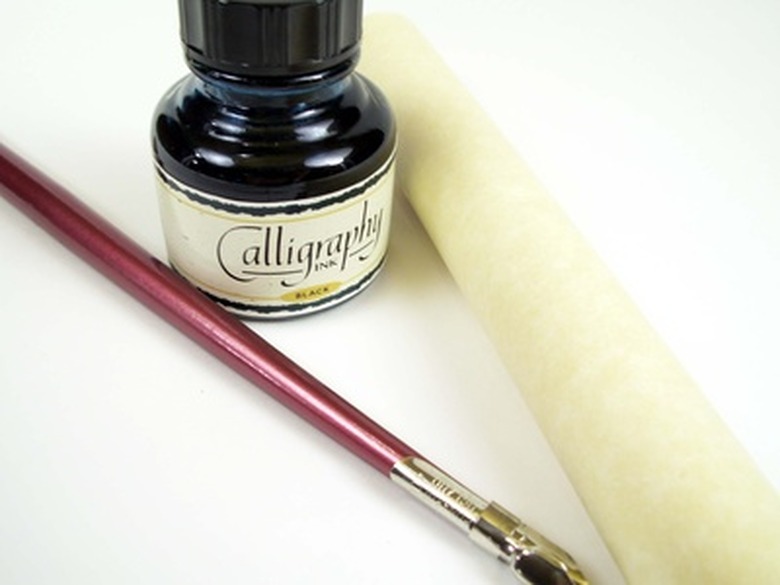How Ink Is Made
According to the Cornell Center for Material Research (CCMR) inks are colored liquids that have been in use since the inception of writing and drawing and are used to write or print on surfaces. The most important part of the ink-making process is the dye or pigment that gives ink its color.
Dyes and Pigments
Dyes and Pigments
In the process of making ink, the two most important factors are the dye and the pigment. CCMR claims that dyes are colored materials that dissolve in the ink. Pigments, on the other hand, are materials used in ink that must be ground into a fine powder or it is possible that they can settle or separate from the ink.
Other Ingredients
Other Ingredients
While dyes, pigments or both are used to give ink its color properties, CCMR claims that the coloring ingredient is mainly mixed with water; however, it is not uncommon for the coloring agents to be set in alcohol or other chemicals depending on the intended use of the ink.
Processes
Processes
The process of making ink has changed little since its inception. For example, CCMR claims that all components are placed in a large pot or vat that is often heated. Next, the mixture is heated until it is blended together in one smooth liquid. In addition, CCMR states that sometimes ink is filtered through a screen or other device to ensure there is no separation or lumps remaining that could clog or interfere with the ink's intended purpose.
History
History
CCMR suggests that ink has been a part of human history even before writing began. For example, cave drawings in prehistoric times would not have been possible without a dye or pigment base. The first dyes and pigments were made out of plants and minerals such as fruit and vegetable juices. Ancient inks were also made from animal parts or excretions from squid and octopus and the blood from shellfish.
Modern Uses
Modern Uses
Modern ink is classified into two categories: printing inks and writing inks. While a great deal of modern ink is synthetic, ink is currently used to fill pens and to make books and newspapers. Ink is found everywhere in modern life from the currency we use printed with ink to cereal boxes in stores and printed advertisements.
References
Cite This Article
MLA
Adkins, Michael. "How Ink Is Made" sciencing.com, https://www.sciencing.com/ink-made-6635280/. 24 April 2017.
APA
Adkins, Michael. (2017, April 24). How Ink Is Made. sciencing.com. Retrieved from https://www.sciencing.com/ink-made-6635280/
Chicago
Adkins, Michael. How Ink Is Made last modified March 24, 2022. https://www.sciencing.com/ink-made-6635280/
